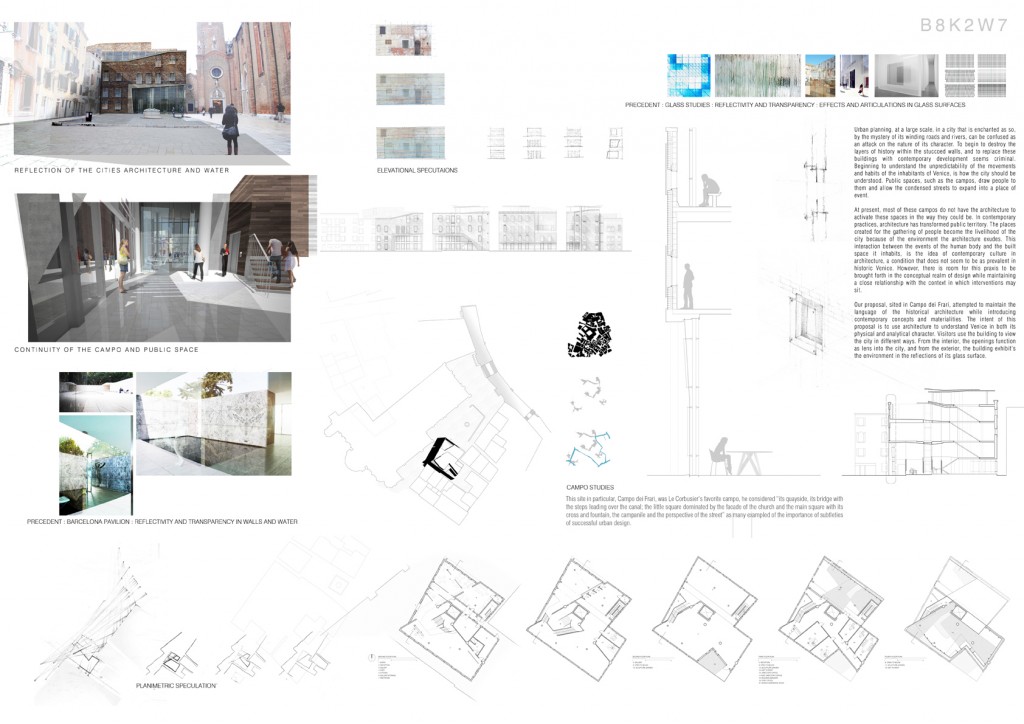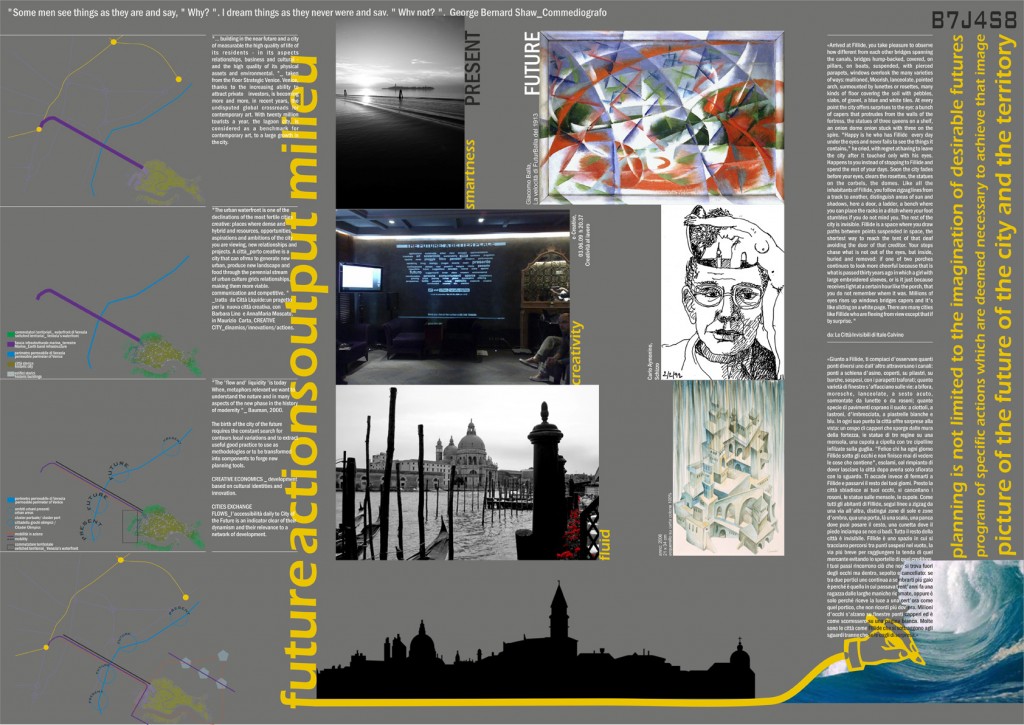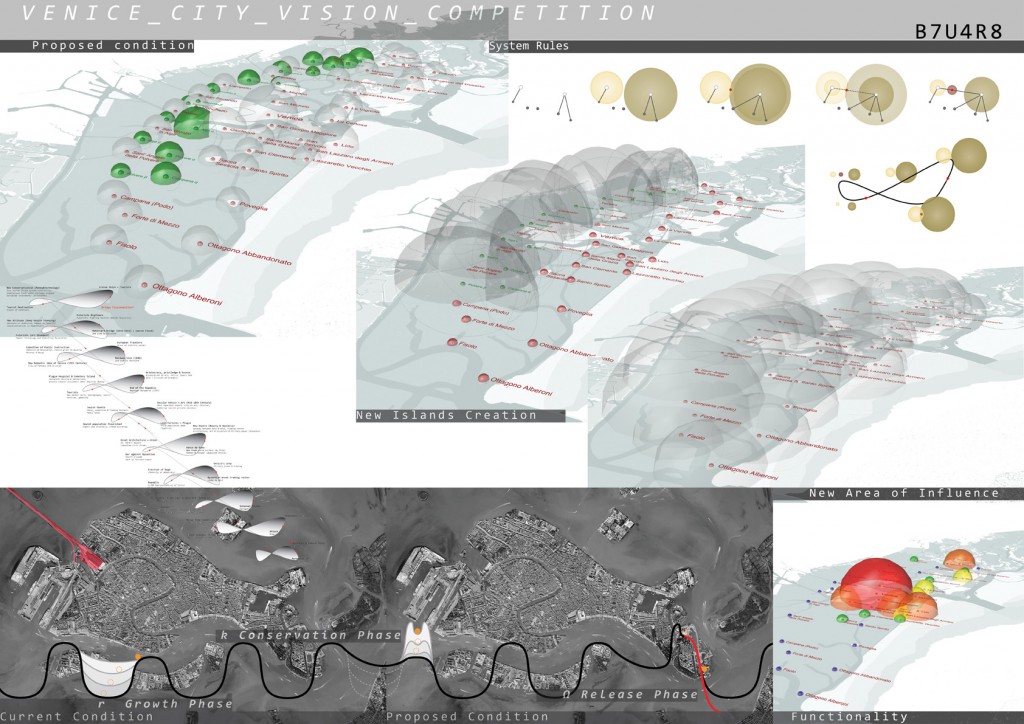Info:
Title: How much can you change without losing your identity? - Code: B7U4R8Contest: Venice / 2011
By: P. A. Montero Aravena / P. A. Cereceda González
Views: 2853 Likes: 0
Votes:
BJARKE INGELS4 NERI OXMAN5 ELENA MANFERDINI3 MARIA LUDOVICA TRAMONTIN4 BOSTJAN VUGA13.4
How much can you change without losing your identity?
How much can you change without losing your identity? How much can a city change before it becomes a different kind of city? Venice has dramatically changed, filled with tourism and increasing high living costs. However, those are only the visible consequences of more radical changes in the livelihood of the islanders; the so called “Venetians”. These changes did not happened during the last decade, but they can be traced back to the first physical connections to mainland, namely the Railway line (1846) or “Ponte della Libertà” and the motorcar bridge (1931-1933) which paradoxically is what has Venice caught to its problems.
Historically, the resilience of Venice has resided in its relationship with the lagoon islands and still is. There is a need to redistribute and develop robust connections within themselves. The project approaches this issue from a system thinking perspective and particularly supporting its process development on the “Adaptive Cycle” which informs sustainability of socio-ecological systems1. This adaptive cycle consists of four phases:
Cycle of adaptive change2
a or reorganization where a system can easily be reorganized into a new type of organization by small inputs. It presents high levels of resilience.
K or conservation. The carrying capacity or maximum sustainable population size
O or release “Creative destruction” (Joseph Schumpeter). The boundaries of the system and internal connections are tenuous. The new system may replicate a previous system organization or it may be something totally new.
or growth represents the instantaneous rate of growth of a population.
This adaptive cycle can be seen through the history of Venice, repeated several times and always providing Venetians with novel possibilities of reconstruct their identity and settlements. From being settlers of the northern part of Italy rushed to the outer reaches of the lagoon by then due to attacks settled in the Rivoalto islands (centre of the lagoon) creating a big trading empire, republic, military fleet and becoming the centre of the arts known today as Venice. The current situation of Venice is an artificially extended conservation phase (K) resulting on a drastically diminished resilience. Therefore, the proposal consists of a disconnection and release of the island of Venice from mainland. Instead, a reconnection process is suggested with a new Lagoon identity, a more sustainable way of living. What makes that possible is the application of Complex Adaptive Systems (CAS) theory2 implemented through parametric software in order to experiment and search for multiples feasible configurations.
Info:
Title: How much can you change without losing your identity?
Time: 7 giugno 2011
Category: Venice
Views: 2853 Likes: 0
Tags: Complex adaptive system , Italy , Joseph Schumpeter , Lagoon , Republic of Venice , Scripps Institution of Oceanography , Venetian Lagoon , Venice








